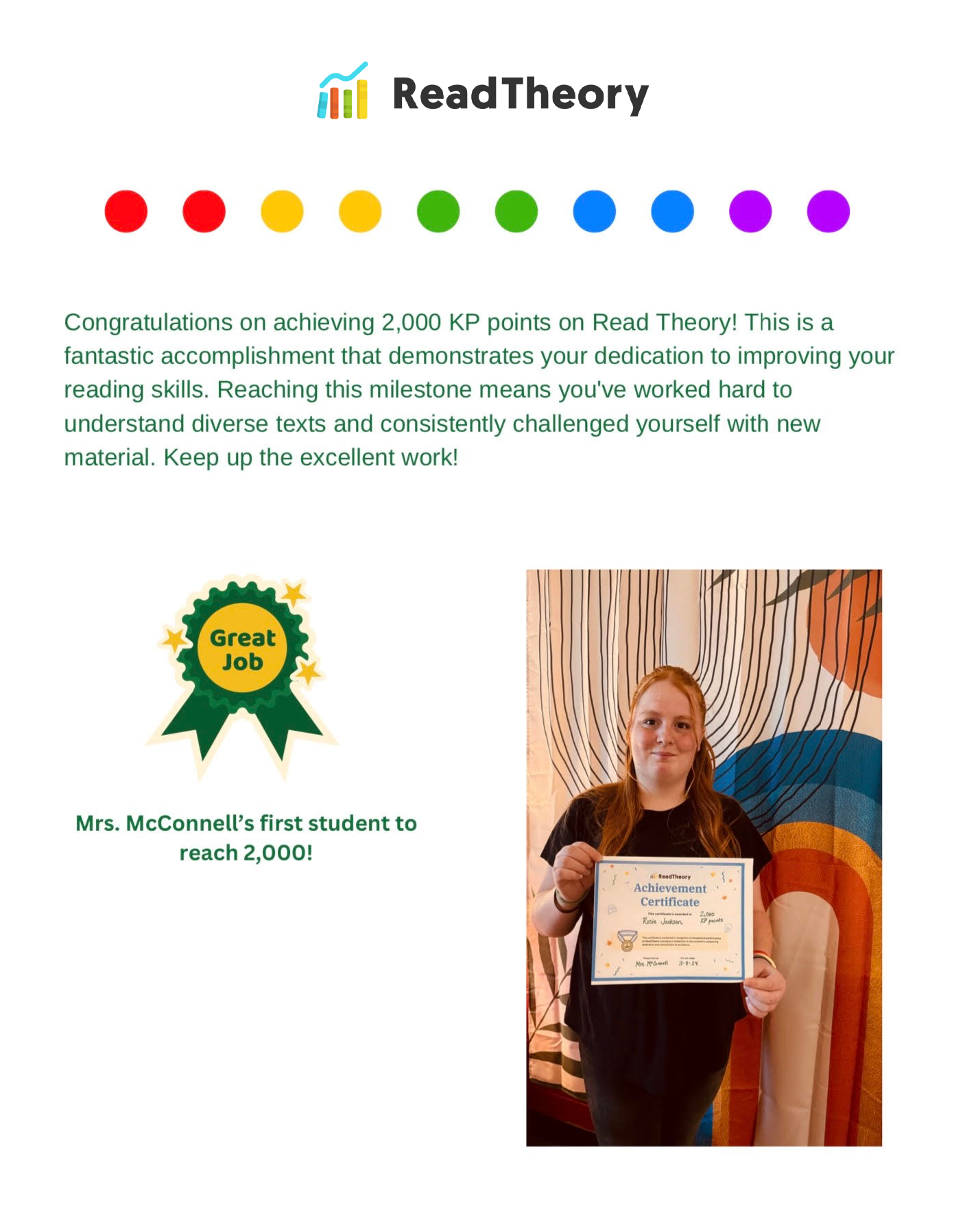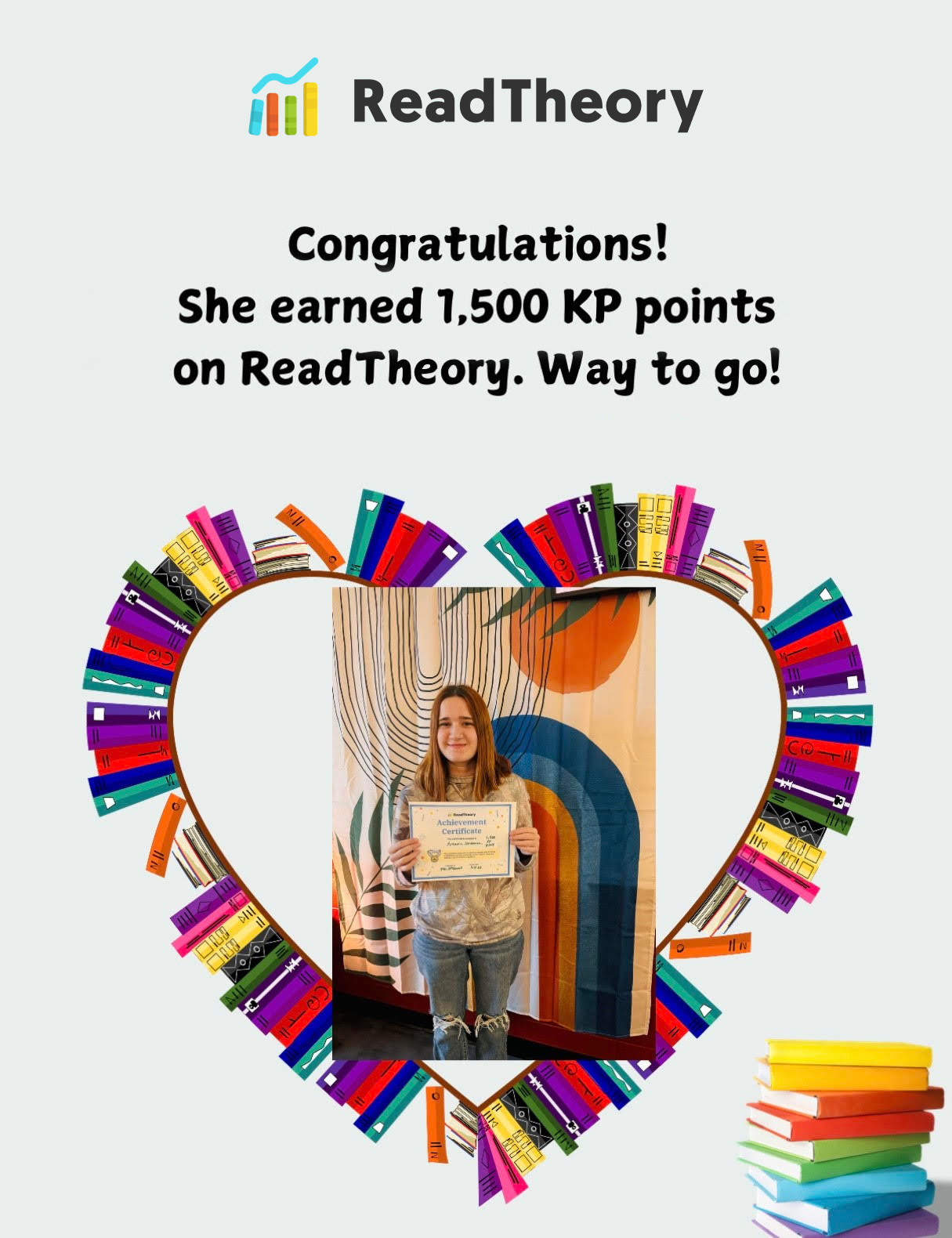When I began teaching Response to Intervention (RTI), a framework for supporting struggling students with early intervention, progress monitoring, and research-based strategies, I quickly discovered how challenging it can be to engage students and inspire them to go the extra mile. Many of my high schoolers (grades 9-12) struggle with fluency, comprehension, and vocabulary, and much of my time is spent working one-on-one to address these challenges.
Since 2018, I’ve found ReadTheory to be an invaluable resource in helping me close these gaps. Not only do I use the data to guide instruction and share insights with my students’ general education teachers, but it also supports collaboration with special education staff by providing extra data for IEPs and 504 plans.
Here are the top 5 ways I’ve used ReadTheory to support my students through RTI:
1. Student-Friendly Interface
I have used many resources for reading intervention in the past. It was always difficult for students with challenges to retain information because the story was on one page and the comprehension questions on another. Chances are very high that students won’t look back to find answers, especially students with deficits. With ReadTheory, the story is on the left side of the screen, with the questions on the right side of the screen. This has helped tremendously with students looking back for answers in the text. I am so pleased with this because it teaches that important skill and I have seen progress with this.
2. Nonfiction and Fiction Content
Read Theory does a nice job of presenting fiction and nonfiction types of stories. This is very helpful for my RTI students. They tend to show that nonfiction is harder for them to understand. I am impressed with the way ReadTheory presents nonfiction in a clear way that can be understood. This allows me to have conversations with my students about types of text and leads to bigger lessons on what is harder for them. I also like the content of the stories that ReadTheory produces. Interest level is so important in order to keep students engaged.
3. Standards/Written Expression
I like the way that Read Theory asks comprehension and vocabulary questions that match our standards: local, state, and national testing. This gives them daily practice to prepare for these types of assessments. ReadTheory gives immediate feedback on questions that are incorrect which provides an opportunity for discussions with my students for them to learn from incorrect choices. The written expression questions lead to a fantastic way to check for understanding in their own words. This allows me to see their grammar skills, comprehension skills, and gives me a bigger picture of deficiencies in their written language. I also love how you can leave comments about their work in the written expression section.
4. Knowledge Points
KP (Knowledge Points) have been a really positive experience and a game changer in my classroom. The high school students are excited to earn these and I have an incentive program in place too. For every 100 points, they receive their favorite drink/snack. At 500, they receive a gift card to their favorite store/restaurant. At 1,000 and 1,500 they get all of the above plus their photo and a write up for our local newspaper/online social media for the school. I send this out to all staff too, so they can congratulate them. I am very excited this year as I have a student about to reach 2,000 KP points for the first time since I have been using Read Theory. This student has worked very hard! I can’t wait to reward them for this amazing goal!


5. Shared Data Use
I use the data for my Rti classes and also share data with staff in the building. I have sent data to the Guidance Office for 504 plans and shared data with special education teachers for IEP (Individualized Education Plans). This data shows where a student was placed after their pretest, how they do on nonfiction vs. fiction, written language/expression, meeting goals, and gives a peek into their areas of strengths and weaknesses. If we see a student struggling, in order to qualify for Rti, a 504 plan, or an IEP assessment, we need ongoing data, Read Theory provides that for us. I am able to share with English teachers in the building about what my students struggle with so they can plan accordingly.
ReadTheory has proven to be an amazing tool in my RTI approach, helping to address the diverse needs of my students with engaging content, real-time feedback, and actionable data. From its user-friendly interface to its support for nonfiction and fiction comprehension, ReadTheory makes it easier to track progress and collaborate with fellow educators. I highly encourage you to give ReadTheory a try, no matter what level you teach. You can sign up for a free ReadTheory account and start using it today. It is a fantastic resource!




1 reply on “5 Impactful Ways to Use ReadTheory for RTI”
Brilliant!
I love love love the direct student recognition – few things are as motivating to students as when they see their names and photos on social media, certificates, and school communications.
Keep up the great work, Andrea!